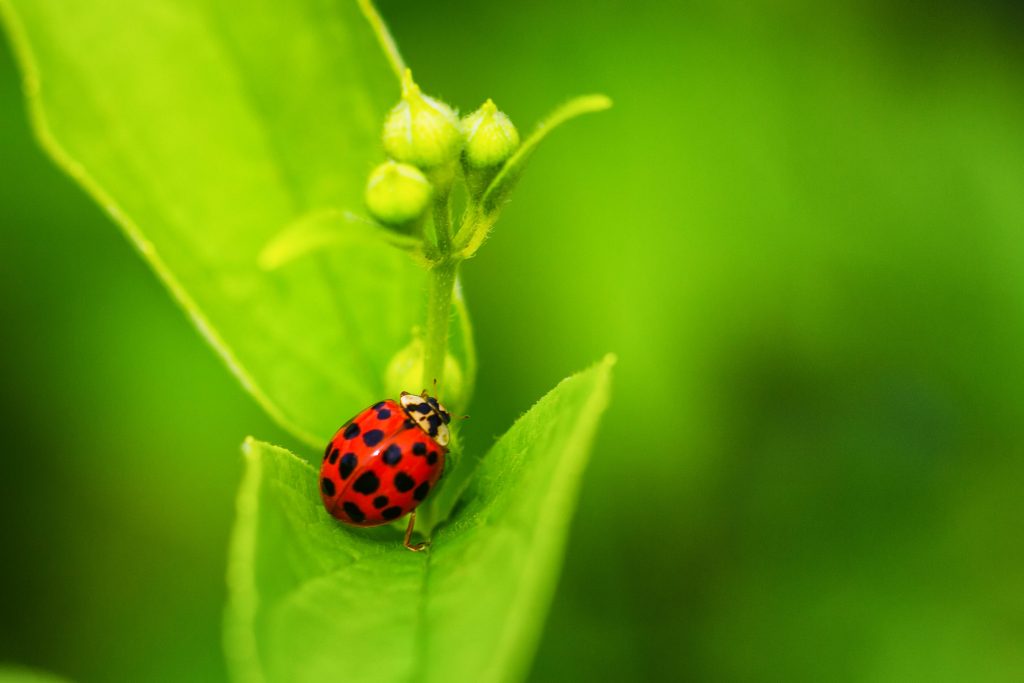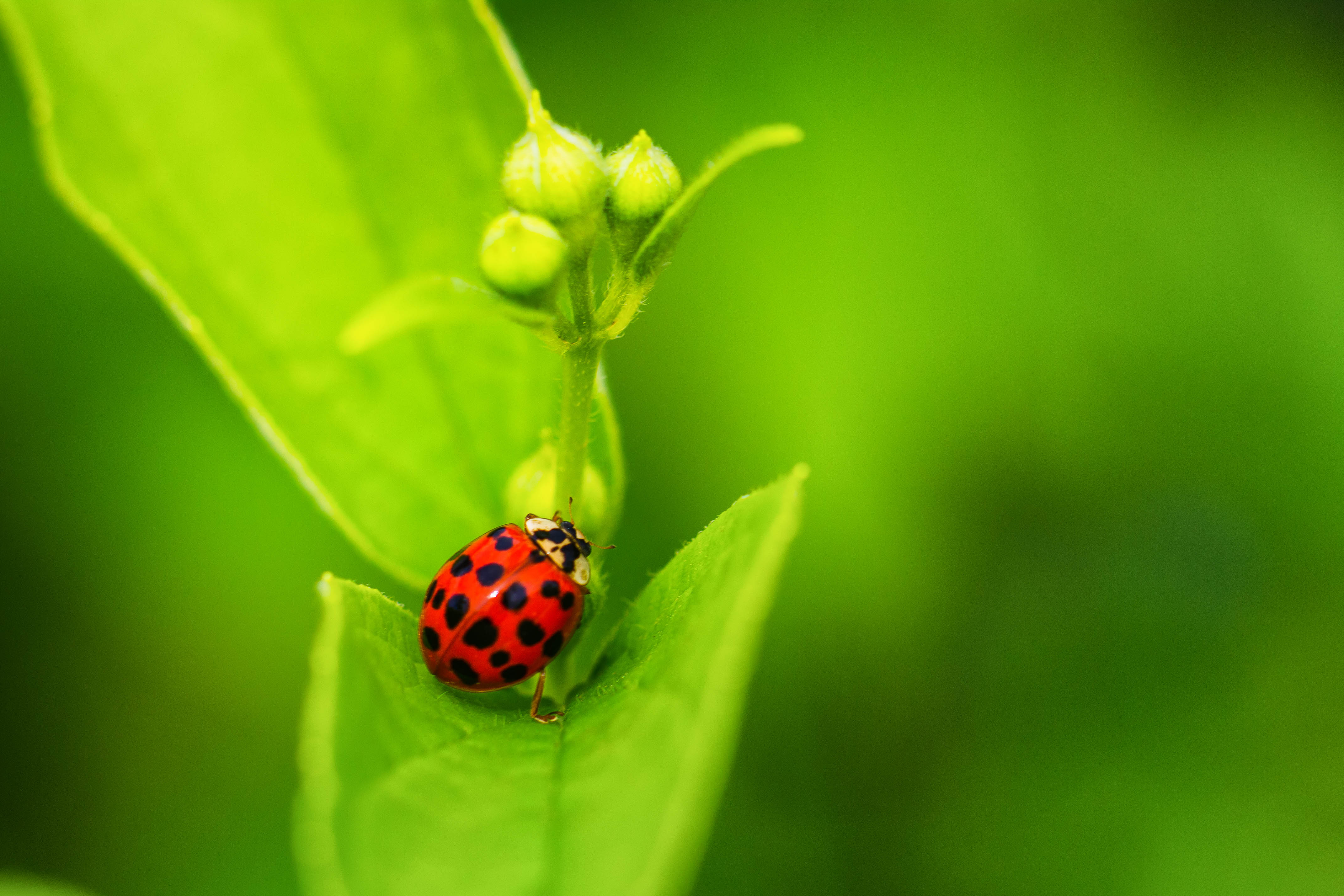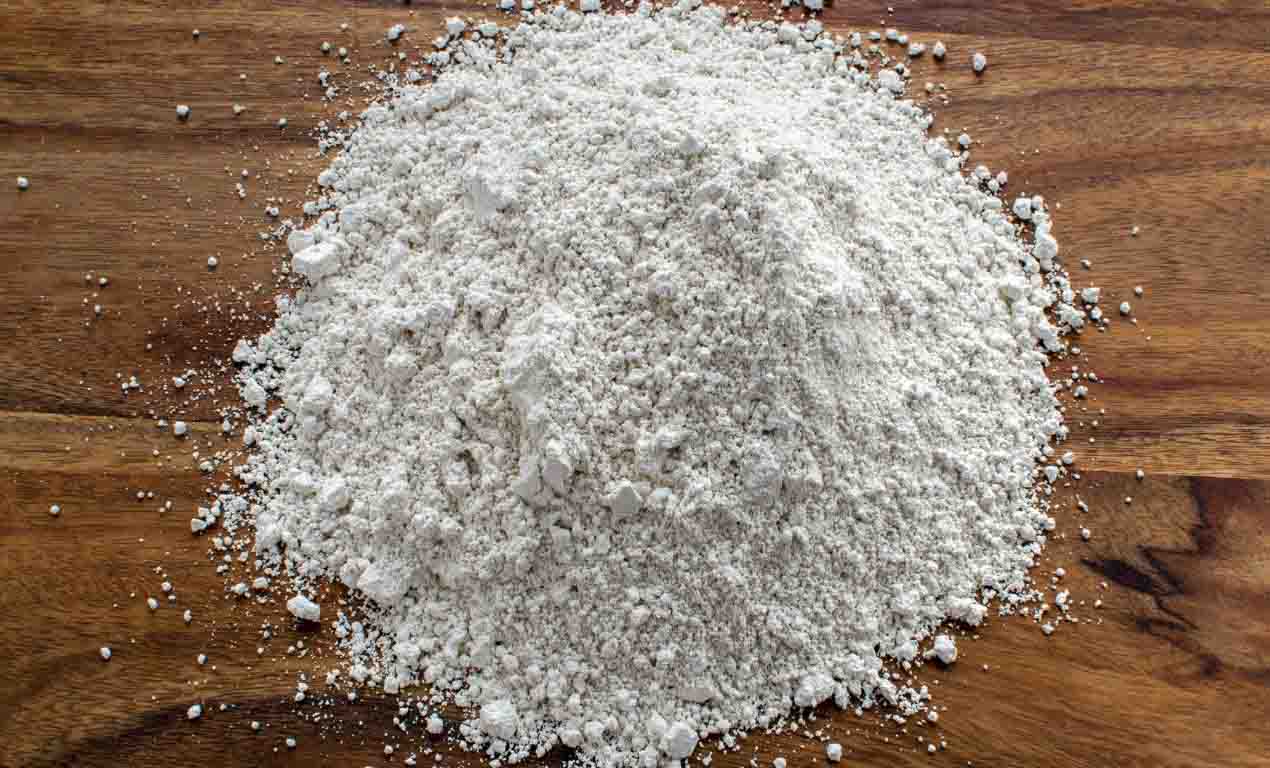

Coccinellidae is a wide-ranging beetle varying from 0.8 to 18mm in size. This species of beetles are known as Ladybugs in North America and Ladybirds in England and their erstwhile colonies around the world. Entomologists prefer them to be known as Ladybird beetle or just ‘ladybeetle’.
Most coccinellid species get considered useful since they prey on aphids and scale insects. Aphids and scale insects are herbivores and damage cash crops. These coccinellids directly lay eggs in aphid and scale insect colonies, so that their hatched larvae have food supply immediately. These activities keep these plants destroying herbivores in check.
There are specific subspecies of coccinellid, known as Epilachninae, which includes the Mexican bean beetle. These are themselves herbivores and multiply quickly in the absence of parasitoid wasps, which attack their eggs. They can create significant crop damage if left unchecked and get found across temperate and tropical countries.
Description
Coccinellids are primarily colored red, orange, or yellow, with small black spots on their wing cover. They have black legs, head, and antenna. There is variation in the color among various species of ladybugs. Some other types of beetles are sometimes mistaken for lady bugs, because of their color and dark spots.
It’s a misconception that the number of black spots on the ladybug’s body refers to its age. Some adults are born with their color, while some species develop their actual pigments after a couple of days.
Biology And Distribution
Coccinellids generally feed on Sternorrhyncha, consisting of aphids and scale insects. However, there are other species of ladybugs that feed on other beetles, their eggs, earthworm, insect larvae, and caterpillar. In addition to their favorite prey, many species also feed on pollen, nectar, flowers, seeds, leaves, and plants.
Some species of coccinellids lay both fertile and infertile eggs, thus providing immediate nutrition to the hatched larvae. Predatory coccinellids lay their eggs near their prey sources on the plant. Eggs take around 3-4 days to hatch, while the larvae stage lasts around fourteen days. The soft-bodied larvae usually are grey with blue, green, black, or red spots. After four steps, the larvae attach themselves to an object to pupate. The adult ladybug lives between one to two years, depending upon the species.
Relationship To Humans
Infestations
In North America, where there are extremes of climate, coccinellids migrate into homes and building next to the farms during the winter. They hibernate together throughout the winter. They are the first to be seen on plants and trees, at the onset of spring.
Invasive Species
Harlequin ladybird or Harmonia axyridis got introduced in North America from Asia to fight the aphids. Now, they have become pests devouring large parts of cash crops in many regions. These species got spread across Europe and Africa.
Pest Control
A large number of ladybirds are clustered and sold to farmers to control pests on their farm. They are known to feed on aphids, scales, and mites. The Australian ladybird beetle, Vedalia beetle, got taken to western North America to fight the outbreak of cottony cushion scales. Ladybirds and their larvae prey on the aphids.
In Culture
Ladybird got immortalized in the British culture thro’ children rhymes and hymns. Many consider them to be of good omen, bringing luck and fortune. European countries place the ladybirds on a high pedestal – the messenger of God.
How To Get Rid Of The Ladybug From Your Garden
Ladybug can be your best friend in case you have scale and aphid infestation in your garden. When these bugs multiply and start attacking your plants, its time they were got rid of. Here are some measures which you can resort to:
1. Diatomaceous Earth
 Wear your goggles and cover your nose and mouth with a mask. Spread the diatomaceous earth around your garden, around every plant. These would soon mix with your soil and kill most of your pests, including the ladybug.
Wear your goggles and cover your nose and mouth with a mask. Spread the diatomaceous earth around your garden, around every plant. These would soon mix with your soil and kill most of your pests, including the ladybug.
DE is made of fossil remains of algae and its properties cuts thro’ the exoskeleton of the insects and dehydrates them to death.
Diatomaceous earth is also known to kill the earthworm and honeybees, which is not a very good idea. Depending upon the extent of ladybug infestation, you must use this method. Do not use DE when your garden is in bloom. This will inhibit pollination. The protective gear prevents the inhalation of this powder into your system.
2. Treat The Aphids
Ladybugs are beneficial insects, which feed on pests like aphids and scales. If you can get rid of these from your garden, ladybugs will also disappear, since they are their primary food source, including their larva’s.
Aphids are small, soft-bodied insects that quickly multiply in your garden. Since they are a slow-moving creature, they can easily get controlled.
Identification: They are tiny, around one-fourth inch and comes in various hues – black, brown, white, grey, green, yellow, and even pink. They have a pear-shaped body, with the antenna in front of two short tubes called cornicles at the rear.
Damage to plants: They feed in groups and build their colonies in the plant. They attack all parts of the plant – from the root to the flowers. Look for the following to identify aphid infestation:
- Look for misshapen, curling, stunted leaves. Look for aphids at the back, where they usually reside.
- If there is a sticky surface on leaves and stems, aphids secrete these waste, which in turn attracts ants to these areas.
- This secretion, called the honeydew, attracts fungus, which makes the place look dark in color.
- Due to these feeding aphids, flowers and fruits will become deformed.
Control and prevention:Following are some simple methods to follow for their eradication:
- Spray cold water on the leaves and the stem. The aphids will get dislodged and would find it difficult to go back to its original haunt.
- Dust plants with flour if the infestation is large. Flour intake will constipate them.
- Horticultural oil, insecticidal oil, and neem oil are useful in aphid eradication. Follow the instruction for use.
- Spray a mixture of water and few drops of soapy water on the leaves and stem. Repeat this spray every 2-3 days for a few weeks.
- Another quite potent mixture is water, a few drops of dish soap, and a pinch of cayenne powder. Shake well and spray.
- Alcohol is an excellent deterrent to aphids. Mix an equal quantity of water and 70% ethanol and spray liberally in all aphid infested areas.
- Another effective is mixture is five parts water, two parts of alcohol and one part dish soap water. Spray this mixture either early in the morning or near sundown. Check your plant for any adverse effect before repeating this spray.
Avoid aphids: We can adopt these methods to avoid aphids in the garden in the future:
- Spray horticultural oil in fruits and shade trees, to eradicate the aphid eggs.
- Introduce some preying insects to control their growth.
- Place catnip plants near your valued trees. Aphids avoid catnips.
- Keep mustard and nasturtium plants as bait for the aphids. They get naturally attracted to these plants.
- Garlic and chives repel aphids and can get placed near rose and peas plants.
3. Vegetable Oil Spray
There is another very effective way to keep ladybug at bay. Make a mixture with mild soap and vegetable oil. This solution, when sprayed on the ladybug or any insect, will cause a covering, which will suffocate these insects. To prepare this mixture, follow these steps:
- Take one cup of vegetable oil.
- Add two teaspoon of liquid soap
- Add the above mixture to a one-quarter liter of water.
- Place the mixture in a spray.
- Spray over leaves and stems, where ladybug infestation got noticed.
4. Neem Oil Spray
 Neem oil is an effective and natural pesticide against most insects. They kill the bugs almost immediately. Follow the below process for this application:
Neem oil is an effective and natural pesticide against most insects. They kill the bugs almost immediately. Follow the below process for this application:
- Take one teaspoon neem oil
- Add two teaspoon of liquid soap
- To this mixture, add one-quarter liter of water.
- Shake well and spray on your plant surface and along the stem.
- All pests, including ladybugs, their eggs and larvae are destroyed.
Since neem oil is natural, it’s biodegradable and safe for your children and pets. This is readily available and price effective. Change the percentage of the mixture by observing the results on the ladybird.
5. Harry Asian Ladybug Killer
This repellant gets used widely to control ladybugs, mosquitoes, flies, and host of other insects. It comes in a ready-to-use container with a spray handle.
This is safe for humans and pets. However, it is toxic to aquatic life, so care to be taken to avoid spraying in ponds and other water bodies with aquatic life.
The active ingredient deltamethrin is effective against pests. This is synthetic pyrethroid, which does not stain and is odorless.
This repellant kills ladybugs and many other pests, immediately after application. The residual property wards away these pests to reappear, for quite a while.
6. Termidor SC Termiticide
As the name suggests, this is a wonderful repellent for termites. However, this gets widely used to control all kinds of pests like the ladybug, centipedes, wasps, yellow jacket, silverfish, and pill bugs.
The active ingredient of this repellant is fipronil, which disrupts the central nervous system of the pests. This is a slow process, which affects the entire colony of a ladybug, and they get defeated.
Avoid spraying this directly on your vegetation and also during the pollination season. This is toxic to the bees. Hence this must be kept in mind. Spray around the stem and the soil. The affected bugs carry this poison to their nests and destroy the rest.
7. Taurus SC w/fipronil
This is very similar to the earlier repellant, and its ingredient is fipronil. It does not come with a spray. Carefully transfer the content into a sprayer and apply it along the ground and the stem. Do not spray on the top of the vegetation.
Avoid this spray when bees are foraging in your garden since fipronil is toxic for the bees. The repellant is useful for all types of pests, including the ladybug. The ingredient is active for an extended period to retard future infestation by the bugs.
8. Buggslayer Insecticide
This repellent comes in large cans and comes in concentrated form. Has to be mixed with water, poured into proper spraying instrument, and used. Detailed instructions get mentioned on the product.
The active ingredient of this repellant is deltamethrin. The synthetic pyrethroid acts fast on the bugs and has a residual effect against future infestation.
If you have a massive infestation of the ladybug in your garden, use a more concentrated mix for spraying. Very effective against many other pests too.
9. Liquid Ladybug Spider Mite Killer
This repellant comes in one-gallon concentrate. Follow the instruction on the can. Ensure the proper percentage of water gets mixed with the solution. Fill the spray with the mixture and spray all the infested areas in your garden.
This repellant is effective against ladybug, gnats, and hordes of other pests. This can get sprayed over the vegetation and stems, where ladybugs are visible.
10. Parasitoid Wasps
This is a natural way of controlling ladybugs in your garden. Very effective against Mexican bean beetle and Squash beetle. These wasps get released when ladybugs lay their eggs. These wasps, Pediobius foveolatus, attacks the larvae of the ladybird, thereby impeding the further proliferation of this bug.
These parasitoid wasps die in the winter. These wasps must get released in time. Avoid during monsoon and rain, since these wasps do not get acclimatized during this period.
11. Dinocampus Coccinellae
This is another type of parasitic wasps, which attacks ladybugs. Here the wasp infests the bug’s brain with a virus to paralyze it. It then lays eggs inside the insect. The larvae bursts open from the bug’s belly, and the cocoon gets created around this paralyzed bug.
The ladybug becomes a provider of the required nutrient for the larvae to survive, pupate, and hatch into adult wasps!
12. Talstar Pro
This product has active ingredient Bifenthrin (7.9%), which gets widely used by experts as an effective pesticide against various pests, including Asian ladybug. This repellant has a residual effect of three months, warding off pests during this period.
Talstar Pro is odorless, does not stain the surface, and can be used on vegetation directly. This is a little expensive for your garden. Read the instruction carefully and is safe for humans and pets. This product gives instant results.
13. Tempo Ultra SC
This is a Bayer product with active ingredient cyfluthrin. It is in liquid form. Read the instruction carefully on the product. Mix the right proportion with water and spray. A 240ml container can cover 30,000 square feet of outdoor space.
Very useful on various pests, including ladybug. The pesticide has a residual effect so that the pests do not return soon.
14. Insecticidal Soap
This horticultural soap gets made from petroleum or plant oil. It is mixed in the right proportion with water and sprayed on plants and soil. This mixture disrupts the cell membranes of the insects, leading to suffocation and death
Use the mix as per the instruction mentioned. Lower concentration gets used for aphids and higher to kill ladybugs. These are environment-friendly and will not harm vegetation, pets, or humans.
15. Cypermethrin
This is another ingredient that gets widely used in the treatment of ladybugs in the garden. This is synthetic pyrethroid packaged in products like Bugoff, Vanquish, and Aphasip. These are available over the counter.
These insecticides get sprayed in lady bug-infested areas on your plant. Read the instruction on each of the products carefully before use. All of them have a residual effect of a few weeks after use, which means the bugs get kept at bay for some time.
Lighted Ladybug Trap
This trap uses male secreting hormone odor to lure the females. It also has a UV light, which attracts the bugs. Very efficient in trapping hundreds of these bugs. You need to have a power source in the garden for this trap to work. Also can’t get used during the monsoon.
Professional Help
Incase your infestation is very high with the ladybug, it is prudent to get external help. These professionals will check the periphery of your garden, understand the various types of pest present, the density of infestation, and then suggest remedial measures.
Such solutions are expensive, but they guarantee results and usually have a shelf life of a few months, within which you get protected. They will also keep in mind to safeguard your vegetation, and their process would be a combination of many methods in addressing the issue.
Concerns
There are certain chemicals used in insecticides, which are harmful to plants, bees, and humans. For example, some neonicotinoid pesticide and fungicide impact the bee population. Pyrethrum, in the synthetic form, gets extensively used in pesticides, along with other chemicals.
These chemicals near water bodies are harmful to aquatic life. Though pyrethrin compounds have low toxicity effects on humans, some get affected in terms of allergic and asthmatic reactions. Some study has also revealed that pyrethroid affects human hormone levels and sperm quality! They also are carcinogenic, hence handle with care.
Conclusion
Ladybugs are beneficial to humans in keeping pests like aphids and scale insects under control. However, when they grow out of proportion and start attacking your garden, they turn to pests. There are innumerable humane and not so humane methods to control and eradicate them.
Welcome to my blog. I have been doing pest control for years since my house, garden and pets were always attacked by various kinds of pests and as a result I had to know proper pest control techniques that works. In this blog I share all the tips and tricks that I know and I hope you’ll find it helpful.
